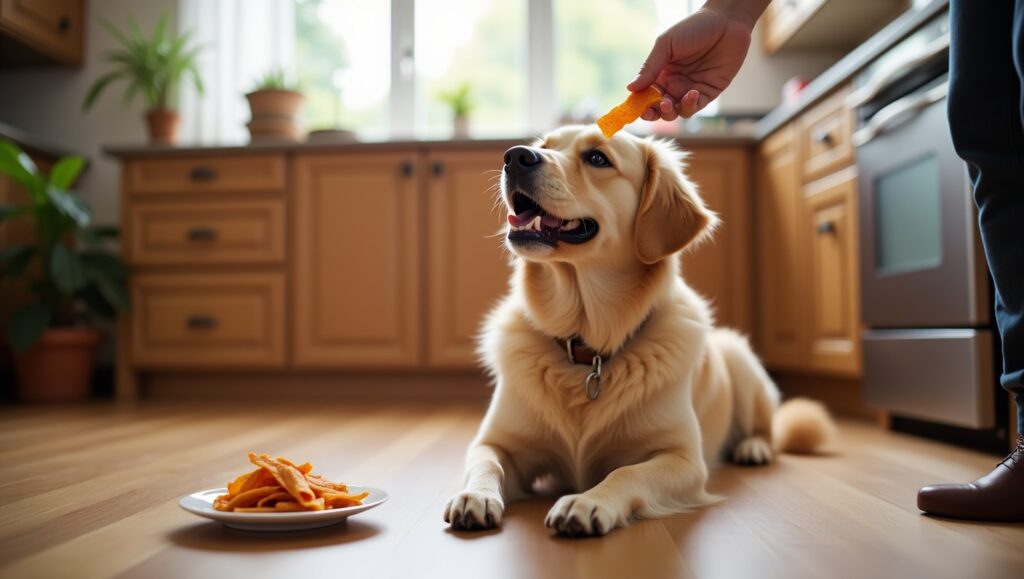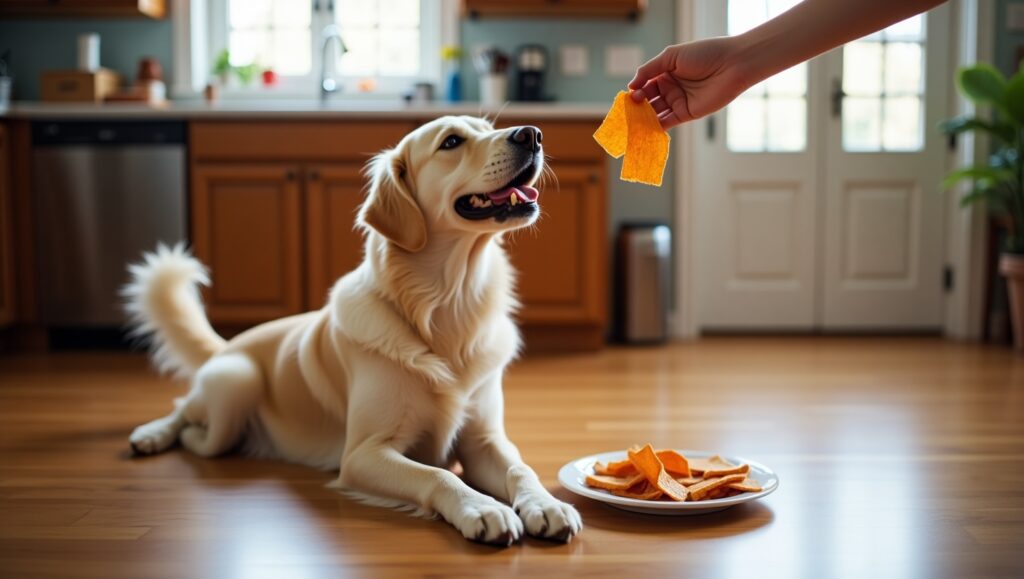
If your dog loves treats (and let’s be honest, most do), you’ve probably seen or heard about chicken jerky. It’s chewy, packed with protein, and dogs go crazy for it. But is it actually good for them?
Let’s break down the good, the bad, and everything in between when it comes to jerky.
🐶 What is Chicken Jerky?
Chicken jerky is a dog treat made by drying thin strips of chicken until they’re chewy and shelf-stable. Unlike the jerky we humans eat (which often has spices, salt, and sugar), dog-friendly chicken jerky should be plain—Chicken Jerky for Dogs and nothing else.
There are two main types:
- Store-bought chicken jerky
- Homemade chicken jerky
Both can be healthy options if made or chosen carefully.
✅ Benefits of Chicken Jerky
Here’s why many dog owners love giving their pups Chicken Jerky for Dogs:
✔️ High in Protein
Great for building and maintaining strong muscles.
✔️ Low in Fat
If made from lean chicken breast, it’s a healthy choice for dogs who need to watch their weight.
✔️ Good for Dental Health
Chewing jerky can help reduce plaque buildup.
✔️ Perfect for Training
You can easily break jerky into small pieces and use it as a high-reward treat.

⚠️ Risks You Should Know About
Not all chicken jerky is safe. Here’s what to watch out for:
❌ Past Safety Issues
Some imported jerky (especially from China) has been linked to dog illnesses and even deaths due to contamination.
❌ Additives & Preservatives
Some brands add salt, flavoring, or chemicals to their treats—which can upset your dog’s stomach or worse.
❌ Choking Hazard
If pieces are too big or too tough, your dog could choke. Always supervise when giving jerky.
❌ Possible Allergies
Some dogs are allergic to chicken. If you notice itching, vomiting, or diarrhea—stop giving it and call your vet.
🛒 How to Pick Safe Store-Bought Chicken Jerky
If you prefer to buy jerky instead of making it, here are some tips:
- Check where it’s made: Look for jerky made in the USA, Canada, or other trusted countries.
- Read the ingredients: The best jerky has one ingredient—chicken.
- Look for real reviews: See what other dog parents are saying.
- Watch for recalls: Search the brand name + “recall” just to be safe.

👩🍳 How to Make Chicken Jerky at Home
Making it yourself is simple and safe. Plus, you’ll save money and avoid added junk.
🐾 Easy Homemade Chicken Jerky Recipe:
You’ll need:
- 2 boneless, skinless chicken breasts
Steps:
- Preheat oven to 200°F (or use a food dehydrator).
- Slice chicken into thin, even strips.
- Place on a baking sheet (use parchment paper).
- Bake for 2–3 hours until dry and chewy.
- Let cool, then store in an airtight container in the fridge.
Tips:
- No spices or seasoning—just chicken.
- Make sure it’s fully cooked.
- For longer shelf life, freeze in small batches.
🐕 How Much Chicken Jerky Can Dogs Have?
Jerky should be a treat—not a meal. Here’s a rough idea:
- Small dogs: 1–2 small pieces per day
- Medium dogs: 2–3 pieces
- Large dogs: Up to 4 pieces
Always keep an eye on your dog when introducing new treats.

🩺 What Do Vets Say?
Most vets agree: plain chicken jerky is safe for healthy dogs when fed in moderation. But they also warn about:
- Buying from untrusted sources
- Using jerky with additives
- Giving too much too often
Always talk to your vet if your dog has allergies or health issues.
❓ FAQ: Jerky
Can puppies eat chicken jerky?
Yes, but make sure it’s soft and in small pieces. Supervise closely.
Is it okay for dogs with sensitive stomachs?
Homemade, plain jerky usually is—but test with small amounts first.
Does chicken jerky go bad?
Homemade, plain jerky usually is—but test with small amounts first.
Yes! Store in a sealed container in the fridge. Toss it if it smells weird or gets moldy.
Can I give chicken jerky every day?
Yes, in small amounts—as a treat, not a meal.
Is chicken jerky a choking hazard?
It can be. Cut into small pieces and always supervise while your dog is chewing.
🐾 Final Thoughts Chicken Jerky for Dogs
Chicken jerky can be a healthy, protein-rich treat your dog will love—if you choose wisely or make it yourself.
✔️ Keep it simple
✔️ Read labels
✔️ Give in moderation
✔️ Watch your dog for any signs of trouble
Your pup deserves the best—and you’ve got the tools to give it to them. 🐶❤️


